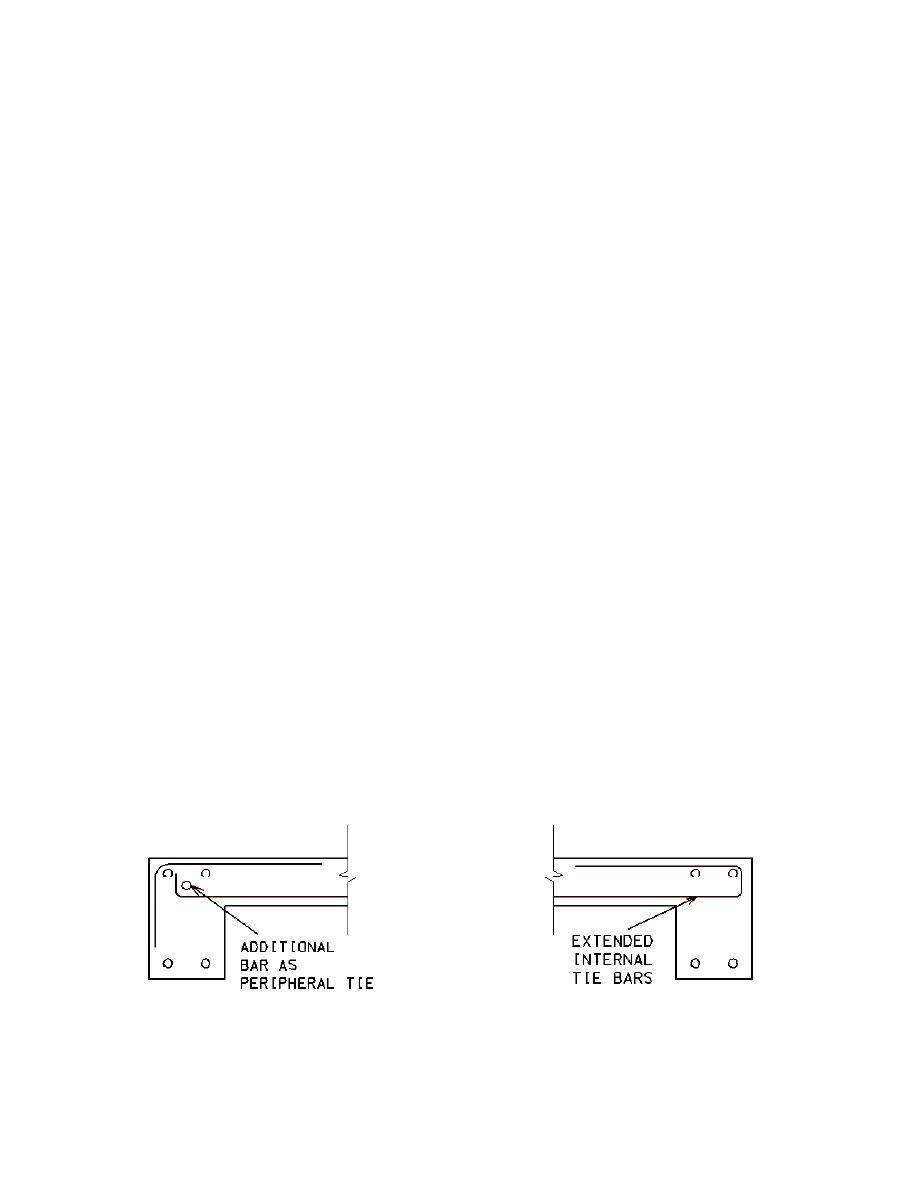
UFC 4-023-03
25 January 2005
B-3.1.1.2 Basic Strength.
The Basic Strength, Ft, is a function of the number of stories, which,
according to Burnett 1975, "reflects that the probability of occurrence of an abnormal
loading increases with building height". Discussions with British engineers suggest that
the dependence on number of stories was imposed to provide a smooth transition
between 5 stories, where tying was not required, and 10 stories where the maximum
value was required.
B-3.1.1.3 Scaling Factors.
In requirement a) above, the factors 7.5 and 5 are scaling factors, to account
for larger loads and spans. The 7.5 factor reflects the typical Dead plus Live Load value
(7.2 kN/m2 or 150 psf) that was in effect in Britain at the time CP110 was instituted. The
5 factor reflects the typical span length of 5 m (16.4 ft). Lastly, it is noted that un-
factored loads are used to scale the internal tie forces.
B-3.1.2
Peripheral Ties.
The peripheral ties are intended to keep the perimeter of the building together
and must be located in the walls or within 1.2 m (3.9 ft) of the building edges. It has
also been conjectured that a main purpose of the peripheral ties is to provide a means
to anchor the internal ties.
As suggested in Burnett 1975, Figure B-4 presents two details for effectively
anchoring internal tie bars to peripheral tie bars; Figure B-5 presents a peripheral tie
detail for corner columns. Obviously, there are numerous other ways to achieve
anchorage of internal and peripheral ties.
Figure B-4 Details for Anchoring Internal Ties to Peripheral Ties
B-6


 Previous Page
Previous Page
